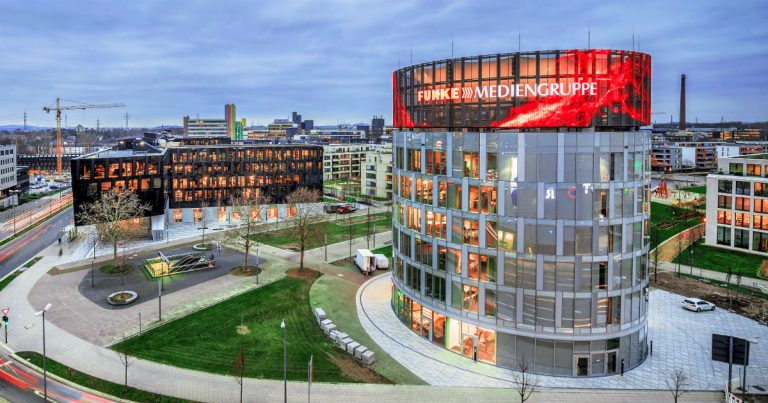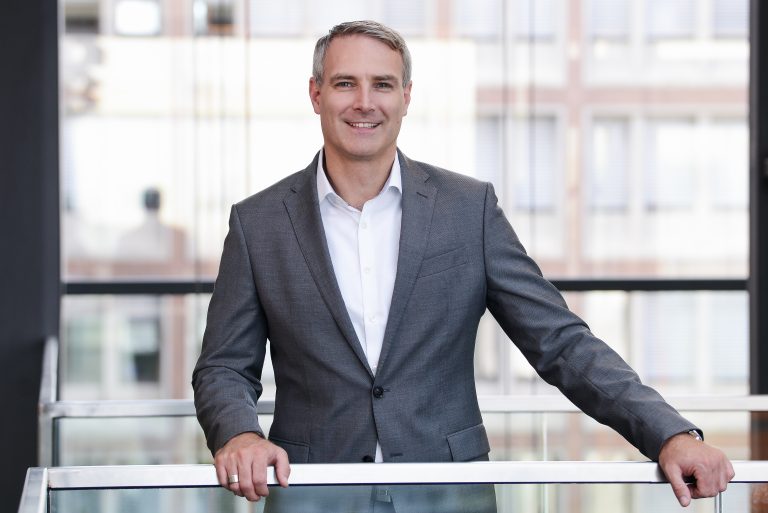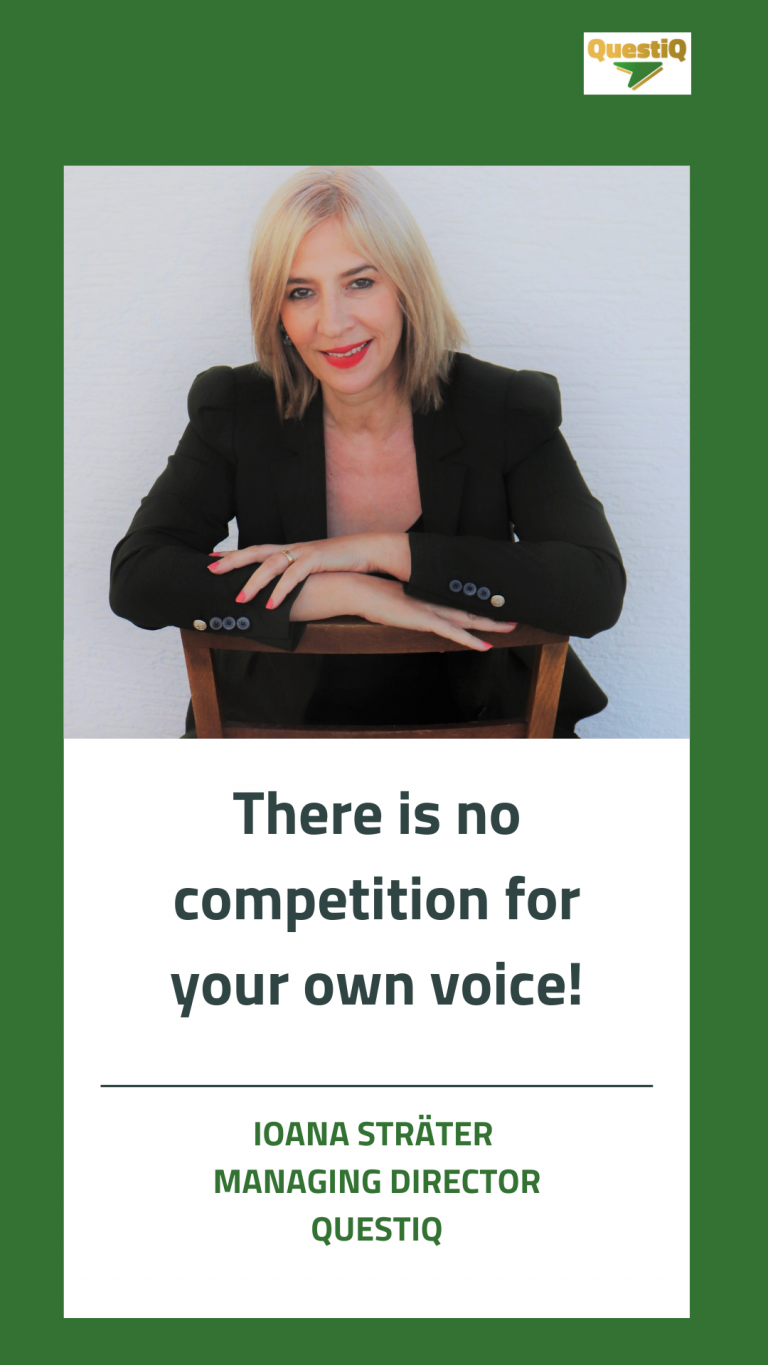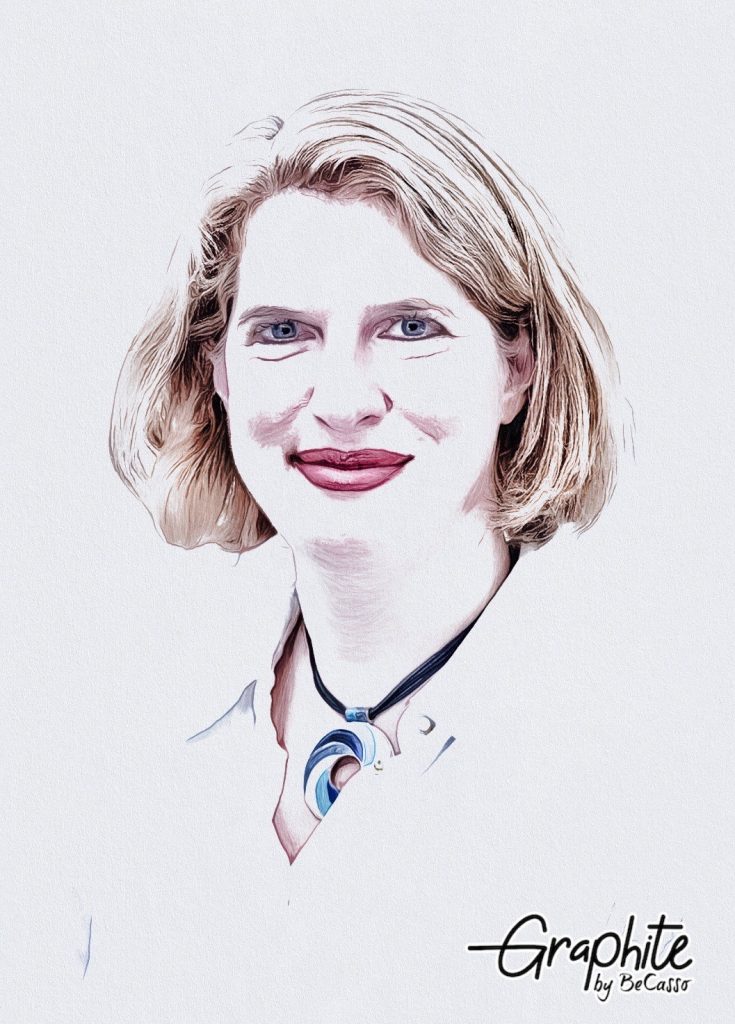
I met Ruth for the first time last September in Hamburg, where she was giving a keynote speech at the INMA European Conference. Her charisma, eloquence and competence transformed not only me, but all the audience, into her fans. Funny enough, Ruth’s transformative effect is not happening only on stage, with her audience, but also in her daily job. Ruth’s job is all about transformation, being in charge of digital transformation for the German local news publishing group Funke. In this role she achieved impressive results over the past two years.
We told the story about “The Spectacular Growth and Digital Acceleration Story @Funke and Hamburger Abendblatt” in a previous article (see Link). This article is about Ruth’s 10 steps to success in digital transformation.
Even if she is not from Hamburg, she learnt that “A sailor looks back only four days anyway, but four years ahead. And then on and on, beyond all horizons.”, she says. And this is what she did – she took a short look back and a broad look ahead, preparing for the future.
Step no. 1: Do your homework. Take a critical look at both your internal and external challenges.
First things first, she analysed the status quo and identified the internal challenges: the premises, the infrastructure, the sales and organisational structure, the cultural and human factors (see illustration below). She did not forget the external factors: paper prices, occupancy rate of the print shop, state regulations.
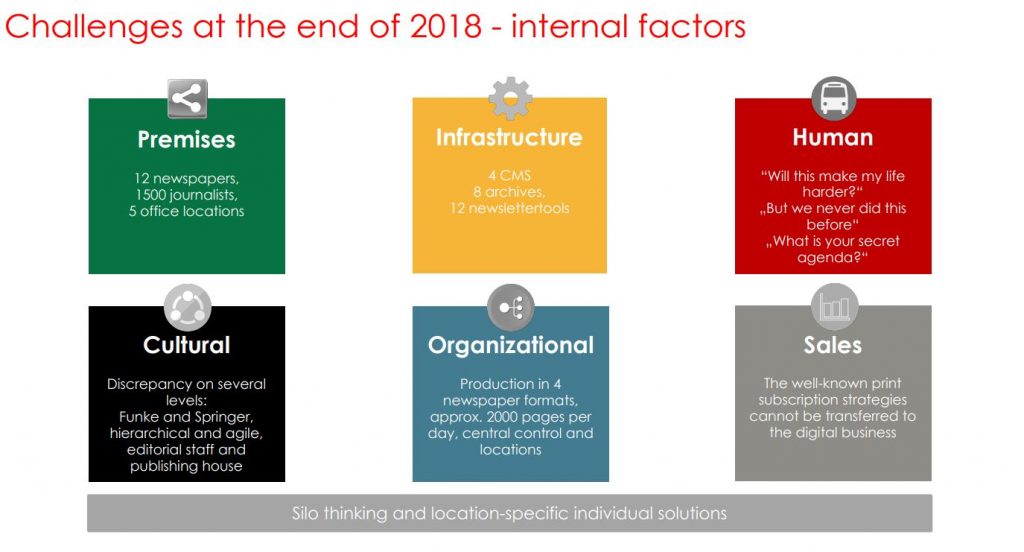
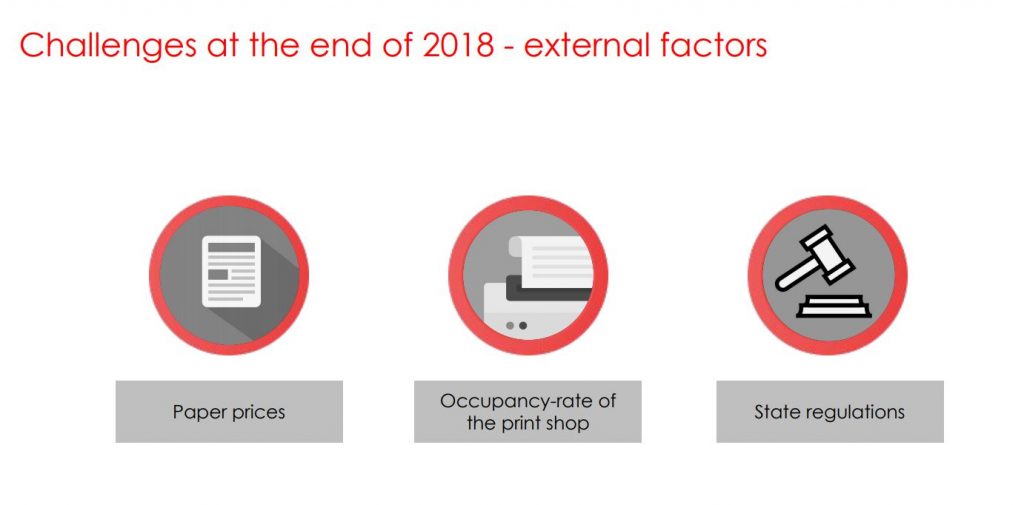
Step no. 2: Look outside your company. She is a firm believer that an open exchange with colleagues who have previously followed the same path of transformation will be inspiring and ultimately profitable.
Step no. 3: Find your way and take the bold step. Once the user-first strategy took shape, she made it clear that to be successful in the long term, common understanding, common goals and the close cooperation of all areas of the company are important steps.
Step no. 4: Work on the new mission statement. She showed the editors why they have to change and jointly developed a new mission statement: “We have to organize our editorial offices in such a way that we make the best possible offer to our readers – according to their interests and usage habits”.
Step no. 5: Work on the new again: new workflows, new newsroom roles, new culture. Transparency, Blameless working, Learning Culture are keywords in a transformation process. Therefore, changes followed: conferences, formats, data-informed decisions, production times, topics for reach and conversions, new newsroom roles and places.
Step no. 6: Roll-out and retrospective. This is oneessential moment: moving from concept to prototype to execution to engagement and culture change and last but not least retrospective assessment and planning ahead.
Step no. 7: Look out for the new challenges and adapt again and again. The next stepwas creating the article score and the newsletter strategy; after researching the best cases the best solution revealed itself.
The unusual step no. 8: Adapting to the most unexpected challenge: the Corona pandemic. “As most publishers we have struggled with falling ad revenues during the crisis. On the other hand if we compare 60 days before [the onset of COVID-19] to 60 days during [the virus most severe impact on Germany] our daily new subscribers went up by 60 percent and our churn went significantly down, so we generated 160% more net new subscribers during that period.”
Step no. 9: Invest time and resources in best communication possible: new communication formats, digital tools, re-prioritizing the tasks and choosing over-communication over under-communication.
Step no. 10: Celebrate Success. This is the rule where Ruth needs to do better, as she herself says, and we hope this article will inspire her to celebrate more often.

With compliments to Dr. Ruth Betz for all the materials and the insights into her work.

